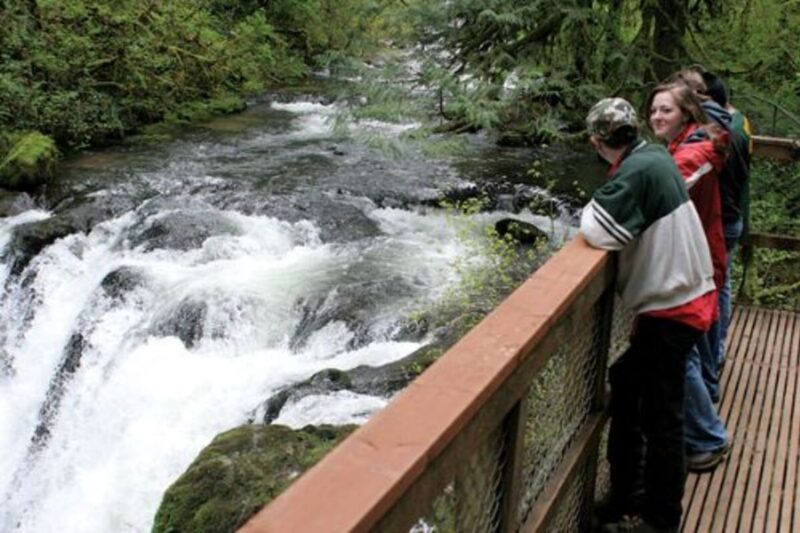Sean C. Morgan
Four Sweet Home High School students spent Saturday morning, April 28, finding and cataloging invasive species at McDowell Creek Park to help on a larger project to eliminate such growth from the South Santiam Watershed.
The students, members of the Sweet Home High School Youth Watershed Council, were learning to map invasive species, identify them and record their findings in a database, said Angela Clegg, coordinator for the youth council and an employee of the U.S. Forest Service. The students included Brittany Warth, Josh Stokes, Jesus Andrade and Briana Warth.
Tonia Siemens, working with the Oregon State University Extension Service on a SEA Grant, taught them the system they would use to complete the work, with help from Sweet Home Ranger District botanist Ryan Murdoff and South Santiam Watershed Coordinator Eric Hartstein. The SEA Grant is a nationwide network of projects, administered through the National Oceanic and Atmospheric Administration, to conduct scientific research, education, training, and extension projects designed to foster science-based decisions about the use and conservation of aquatic resources.
The idea is to identify invasive species, monitor them and then control them, Siemens said. “The reason this is such a cool spot is it’s very pristine, and there’s not a lot of invasive species.”
After looking for invasive species, said Brittany Warth, the students started working on a rapid response plan.
They located some false brome, an invasive species, she said. They entered their findings into a database, iMapInvasives, which will help them develop a plan to deal with it. The students will remove the false brome, and then keeping going back to keep the park clear of it.
Their work is related to an effort by the Oregon Invasive Species Council, watershed councils and the Oregon SEA Grant, Siemens said.
“The work up here is complementing a lot of restoration work we’re doing downstream on McDowell,” Hartstein said. The South Santiam Council is working with private owners downstream, and the work the students are doing will help protect those properties by preventing the plants from spreading downstream. It’s a watershed approach.
“I’ve been in it for four years,” Warth said. “I became interested as a freshman because I like our environment, and I want to preserve it.”
The high school program has seven members and new recruits are needed, she said. Students may contact Clegg at (541) 367-5168 to get involved.





